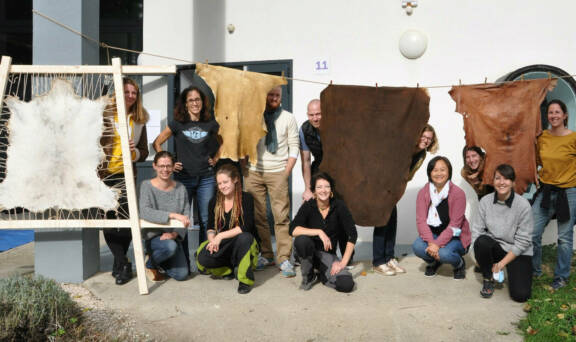Analyzing the objects' material constituents and how they were produced provides detailed information to complement the work of historians, art historians, ethnologists, and anthropologists on Native North American material culture.

The Workshop "Tanning Hides"
Identifying the tanning process used on a hide held in a museum is no easy task, unless you are - like Theresa Emmerich Kamper, who holds a doctorate in experimental archaeology from the University of Exeter - a specialist in the field. In October 2021, Dr Emmerich Kamper, assisted by Sabine Martin, a doctoral student in archaeology (University of Exeter), led a hide-tanning workshop attended by…
Read more
Making the Object Speak
The purpose of the physicochemical analyses of the objects from the French Royal collections from North America is to shed further light on the historical, ethnological and anthropological information available. Indeed, identifying the materials can enable us to trace the origin and circulation of the substances used, and the transactions between the Native Americans and the Europeans in North…
Read more
A First Encounter with the Collection of Painted Hides
The set of North American painted hides held in French collections is the largest and oldest of its kind anywhere in the world. Fifteen of them, in the musée du quai Branly - Jacques Chirac, date back to the eighteenth century. The hides come from the ethnographic collection of the Cabinet des Médailles , in the French National Library, and from the Versailles Public Library's former "Cabinet of…
Read more



